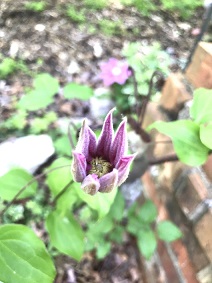 Many of us feel stressed at times. We may have a large to-do list, varied personal or professional tasks and so on. While short-term stress serves a purpose to get things done, a sense of overwhelm is a red flag that we are reaching our emotional capacity. As we recognize and are mindful of May being Mental Health Awareness Month, I want to share some information that will assist you in determining the difference between stress and overwhelm and provide some tips to help. While there are many stages of stress, the goal of this article to provide varied modalities that are self-directed. At the end, there is more information on where to turn if you need additional help from a professional.
Many of us feel stressed at times. We may have a large to-do list, varied personal or professional tasks and so on. While short-term stress serves a purpose to get things done, a sense of overwhelm is a red flag that we are reaching our emotional capacity. As we recognize and are mindful of May being Mental Health Awareness Month, I want to share some information that will assist you in determining the difference between stress and overwhelm and provide some tips to help. While there are many stages of stress, the goal of this article to provide varied modalities that are self-directed. At the end, there is more information on where to turn if you need additional help from a professional.
Feelings of overwhelm occur when stressors become so great that a person believes they are unable to deal with them. Overwhelm is a strong emotion that creates feelings of worry, panic and even helplessness. In addition to the emotional feelings, an individual may experience physical symptoms such as a rapid heartbeat, shallow breathing, sweating and even chest tightness.
Stages of Stress & Strategies
Let’s look at what happens when a stressor occurs. Imagine you’ve just heard that a loved one has been in a car accident. Your body is alerted and cortisol (stress hormone) and DHEA (another hormone that your body naturally produces in the adrenal glands) increase. You find out they are safe and unharmed and then your body recovers. This is what you want, short-term stress. If the stressor is more than just a quick episode, your body attempts to adapt. For instance, if your loved one needed care after the car accident due to injury and they moved in with you, this changes the dynamics of your household and schedule. If the situation doesn’t change and you’re juggling work, family and taking care of a family member, cortisol is chronically elevated and DHEA decreases. This is when you might feel hurried and anxious. If taking care of a loved one continues for weeks or even months and your mental and physical resources are used up, this can lead to exhaustion. At this point, you may become fatigued because your adrenals are depleted. You have low cortisol and DHEA and you move into a potential depressive state, feeling overwhelmed with no end in sight for your caretaking.
Caretaking is not the only stressor that can lead to this, but just an example. Perhaps overwhelm comes from a work project that appears daunting. When feelings of dread and anxiousness occur, the key is to pause and breathe. Don’t overreact and let the mind start negative commentary! When I was chosen to present for Big Ideas in 2021, I had a bit of panic considering that I had six weeks to create, practice and present “live” to all of SAS. I had my topic and a list of bullet points but that was it! I could have been flustered, but I paused and took a breath and outlined each week through the presentation. Taking the time to break down the large task into small steps was the key to a successful and enjoyable experience.
from a work project that appears daunting. When feelings of dread and anxiousness occur, the key is to pause and breathe. Don’t overreact and let the mind start negative commentary! When I was chosen to present for Big Ideas in 2021, I had a bit of panic considering that I had six weeks to create, practice and present “live” to all of SAS. I had my topic and a list of bullet points but that was it! I could have been flustered, but I paused and took a breath and outlined each week through the presentation. Taking the time to break down the large task into small steps was the key to a successful and enjoyable experience.
When you’ve got a lot to accomplish with a project (personal or work), you may wonder “how am I going to get all of this done!?” Write down the items that are challenging you, what needs to be accomplished and prioritize them in order of importance. To ensure you don’t feel panic, avoid multitasking and simply be with one task at a time to get this project done! It’s easy to get entangled in a web search or social media when you’re supposed to be doing something else. When you are done, cross it off your list and smile. Task by task you see your to-do list getting done and finally the project is accomplished. Seeing your list, striking through each item with a pen (the old-fashioned way) can be satisfying, especially when you thought it couldn’t be done.
The key to anything is acknowledge it, don’t procrastinate and be present. When you avoid, that is when panic can move in. From putting off a work project, school assignment, personal task, procrastination makes us more reactive. It’s best to be proactive.
If you have a long list of to-dos and not just a single daunting project, set aside time to mindfully do those tasks. It’s easy to be on automatic pilot for things that don’t take a lot of brain power. These items can get you into trouble if you’re not present. For instance, if you’re checking and responding to emails, you may put off answering an email because you don’t want to deal with it and then you forget about it. Maybe you’ve been asked to join a panel discussion at work, a work group, be a school chaperone or host book club. You may think it’s easier to say you’ll do it although you really don’t have time. What you’ve done is add another thing to your future to-do list.
to-dos and not just a single daunting project, set aside time to mindfully do those tasks. It’s easy to be on automatic pilot for things that don’t take a lot of brain power. These items can get you into trouble if you’re not present. For instance, if you’re checking and responding to emails, you may put off answering an email because you don’t want to deal with it and then you forget about it. Maybe you’ve been asked to join a panel discussion at work, a work group, be a school chaperone or host book club. You may think it’s easier to say you’ll do it although you really don’t have time. What you’ve done is add another thing to your future to-do list.
Not every task or situation is a simple solution, so I want to acknowledge that. Having a family member stay with you when they are rehabilitating may not be something you planned on but there may be no other option. Sometimes life throws us for a loop! Whatever the chore or life event, I’ve created a long list of wellness rituals that can assist from administrative to true self-care. Try them overtime and don't be overwhelmed by the list. This is supposed to assist with stress, not create more!
Tangible Tips
- Time Wasters – Know where you’re spending time. Track what you’re doing every 20 minutes for a week. I know it sounds like an extra item on your to-do, but you will quickly figure out what/who are time wasters.
- Requests from Others – If someone asks you for something, don’t add it to your to-do list. If it’s a contact or something easy like a document, send it to them at that moment.
- Blocking Time – Do you have tasks that are weighing you down? Block out an hour a week and be present with these jobs that are stealing your energy. Only focus on these things…nothing else!
- Wake Up Earlier – Wake up 10 minutes early so you aren’t rushed. This sets the scene for your day. If it begins stressful, little things can set you off. Start your day with calm.
- Digital Detox – Give yourself a digital detox day(s) or weekend. While social media allows us to be connected (virtually), a lot of time can be wasted with technology. Real-life interactions are important! Give yourself a break and see what happens. Tell friends and family that you won’t be responding to emails, social media, etc. (I remember when we had a corded phone with no answering machine…those were the days!)
- Unstructured Time – Slow down and give yourself time to rest and reset. It’s probably not a coincidence that when there was a decline in leisure activities decades ago, we started to see an increase in stress and anxiety. Find a hobby that brings you pleasure, not streaming television shows. What a beautiful gift to give yourself!
- Deep Breaths – Even when we’re experiencing normal circumstances, we chest breathe with an average rate of 12 to 20 breaths per minute. In a relaxed state, the rate is around six to ten breaths per minute. During anxiety or panic, both our breath and heart rate increase. The key to a relaxed breath is to take slow, deep breaths that move into the belly. Practice!
- Meditation – Studies have revealed that the practice of meditation can assist with stress, reducing anxiety and panic. It can assist with fatigue and improve quality of life. Those who commit to at least 10 minutes a day have less stress and better focus. Here are a selection of links to get you started.
- Reset Your Vagus Nerve – This wandering nerve assists in keeping harmony in an assortment of important bodily functions. When your vagus nerve is working well, you recover more quickly from stress and even illness. If it’s not working optimally, you may experience fatigue, brain fog, anxiousness, low mood, a compromised immune system and even pain. Learn how to reset your nervous system with some vagus nerve tips.
- Practice Yoga – This ancient art movement not only aligns the spine, builds strength and improves flexibility, but it is also meditation in movement. Studies have shown that a consistent yoga practice can significantly reduce stress, improve mood, and assist with anxious thoughts. Practice!
- Earthing/Grounding – This technique is designed to bring us back to nature. It allows for the simple connection of the body to the electrical energy of the Earth. There are so many health benefits. Read more. I particularly like this in the evening when the sun is setting and my bare feet are on the Earth. It’s almost as if a wave of relaxation washes over me and I’m ready for the evening.
- Spending Time in Nature – Over the last century, we’ve distanced ourselves from nature. We have
 replaced natural sunlight with artificial. We are drenched in a constant bath of blue light from technology, Wi-Fi and electromagnetic frequencies (EMFs). As humans, we are supposed to be in nature. Not doing so has a negative impact on our physical and mental health. Simply being present outside is wonderful. Learn more about the healing benefits of the sea, sun and sand.
replaced natural sunlight with artificial. We are drenched in a constant bath of blue light from technology, Wi-Fi and electromagnetic frequencies (EMFs). As humans, we are supposed to be in nature. Not doing so has a negative impact on our physical and mental health. Simply being present outside is wonderful. Learn more about the healing benefits of the sea, sun and sand. - Get a Massage – This manual therapy has been used for thousands of years. It manipulates muscles and soft tissue to reduce muscle tension and improve blood flow. It has also been shown to release endorphins that assist in improving mood and reducing levels of the stress hormones. When this happens, stress and symptoms of anxiousness and even a depressed mood has been shown to be reduced. Schedule one today.
- Self-Acupressure – For those who don’t like needles and want something to try at home to calm the mind and anxiousness, acupressure is it. Acupressure involves the application of pressure to varied points on the body using the fingertips. By gently massaging and pressing on certain points related to the energy channels (meridians) in the body, this calm and ease can flow through. Learn more about acupressure. Download this handout and try some Acupressure Points on yourself for stress, anxiousness and calm.
- Epsom Salt Baths – I’m a huge fan of magnesium. Just ask my family! They claim my hashtag is #gotmagnesium. One way to get this amazing mineral into our bodies is by taking a bath or even a small foot bath. I love the full bath because then I can also incorporate essential oils, breath and relaxation. When Epsom salts are absorbed into the body, stress dissipates, muscles relax, pain subsides and sleep is improved.
- Exercise – There are physical health benefits of exercise, but there are also mental health benefits. Not only does it reduce stress hormones, but it can increase the production of endorphins (chemical messengers that can reduce pain, discomfort and improve mood). Exercise has been shown to improve focus and cognitive function. It can even improve fatigue so the next time you don’t have the energy to workout, give it a try. Bonus: It can also improve the quality of sleep. Sleep is so important when it comes to stress and mood. Get Moving!
- Practice Mindfulness – When our mind is not focused, our thoughts tend to meander wherever. While our minds do like to explore, wandering thoughts can often lead to negative thoughts that can spark anxiety and lower our mood. Mindfulness isn’t having a mind free of thoughts. It’s simply watching our thoughts, catching them and returning to the breath. The minute you notice your thoughts exploring negative territory or ruminating on a past event, you bring it back. Learn more from the Pursuit of Mindfulness.
SAS Well-Being Is Here For You
 While you have a lengthy list of options to explore, we have more resources. Learn more about cultivating stress-resilience, discover short meditations and mindfulness options from our gallery. Perhaps listen to our Letting Go Meditation created by RFC Wellness just for Mental Health Awareness Month!
While you have a lengthy list of options to explore, we have more resources. Learn more about cultivating stress-resilience, discover short meditations and mindfulness options from our gallery. Perhaps listen to our Letting Go Meditation created by RFC Wellness just for Mental Health Awareness Month!
Whole body health is important, especially mental health. When life’s unexpected setbacks happen and you need more than just tips, visit Employee Assistance Programs (EAP): US and Global | InsideSAS or contact the SAS Work/Life department. Their staff are here to help you navigate difficult waters - email workliferesponse@sas.com Wishing you a life of health and happiness.
